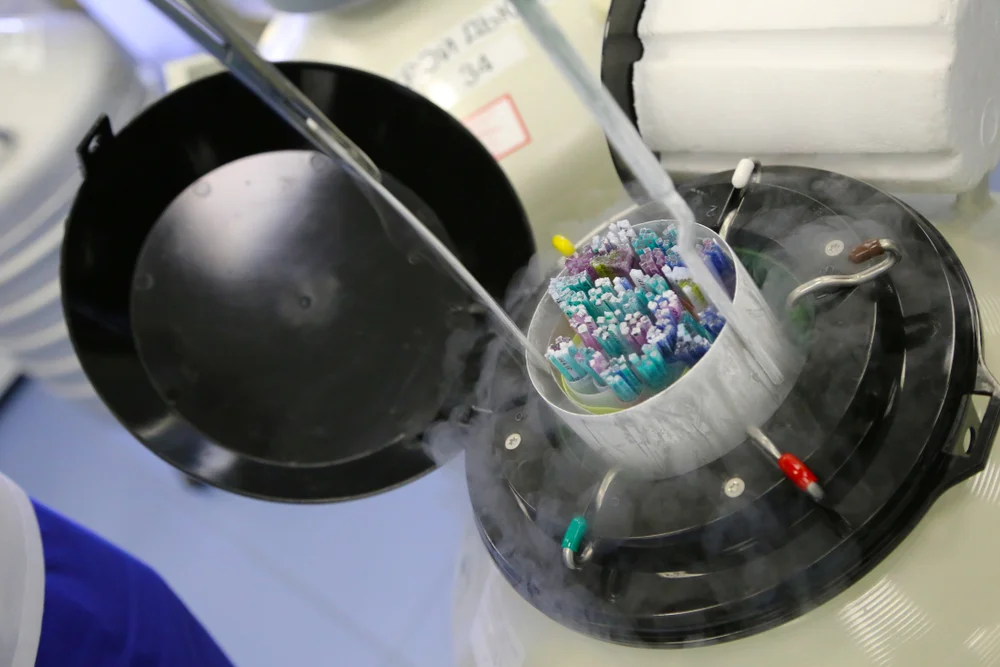Fertility Preservation
Fertility preservation is a form of assisted reproductive technology that allows people to extend their fertility options past the limitations of age and other health concerns.
This is accomplished using cryopreservation, which is the process of freezing gametes (eggs and sperm) or embryos for future use in an in vitro fertilization (IVF) cycle.

In cryopreservation, gametes and embryos are frozen at an ultra-rapid rate through a process called vitrification, which transforms the cells and their surrounding fluids into a glass-like substance. Before vitrification, gametes and embryos are treated with cryoprotectants, which help to maintain the delicate structure of the cells and protect them from forming ice crystals. When ready, the gametes or embryos are thawed and prepared for fertilization or implantation.
Why Fertility preservation?
Fertility preservation can be done by choice or because of medical needs. It is commonly used as part of oncofertility care for patients who are about to undergo cancer treatments such as chemotherapy or radiation, both of which can harm reproductive health. Because time is of the essence when it comes to receiving cancer treatment, fertility preservation is fast-tracked for oncofertility patients.
Elective fertility preservation is when patients decide to freeze their gametes or embryos for a non-urgent medical reason. The practice of egg freezing has become increasingly common in recent years, with many women choosing to preserve their fertility when it’s at its peak. Elective egg freezing allows women to pursue their goals and ambitions before having a family. Similarly, elective sperm banking has also increased in popularity in recent years. This is an especially useful technique for men who want to get a vasectomy but also want to keep their fertility options open.



